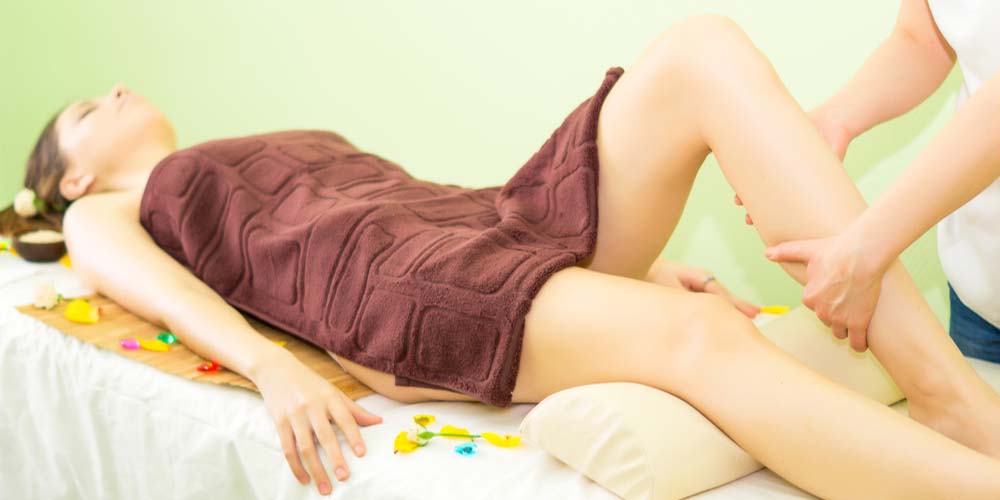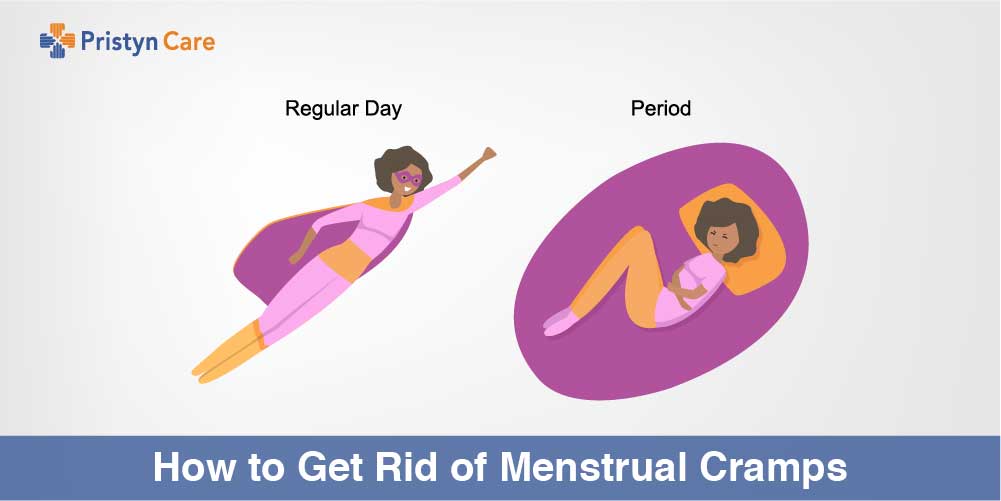
Menstrual cramps can be very uncomfortable and unbearable, but these cramps happen for a reason. During periods, the uterus contracts or squeezes, which causes the cramps. The contractions of the uterus make the uterine lining come off the walls of the uterus and leave the body through the menstrual blood. The uterus cramps to help the period blood flow out of the vagina.
Most females get period cramps at some point in their lives. These cramps feel like throbbing pains in the lower belly. The cramping can start a few days before the onset of the period, and may continue throughout the period. Cramps are usually worse during the first few days of the period when the flow is the heaviest.
A female may get cramps as soon as she gets her first period. In some cases, the period cramps may get more or less unbearable throughout life.
Severely cramps may be a sign of:
- Pelvic Inflammatory Disease- An infection in reproductive organs.
- Endometriosis – A condition where the inner uterine lining grows outside of the uterus.
- Adenomyosis – The condition in which the tissues that line the uterus grows into the muscle wall of the uterus.
- Uterine fibroids – These are non-cancerous tumors that grow inside your uterus, in the walls of your uterus, or on the outside of your uterus.
If having super bad cramps do not get better or get severe, call your gynecologist for professional advice and supervision.
Table of Contents
What’s PMS?

PMS or premenstrual syndrome means the emotional or physical symptoms that some females experience right before or during their menstrual cycle. PMS is caused due to the hormonal changes that the body goes through during the menstrual cycle.
Some females experience PMS in every period cycle. While some females may only experience PMS once in a while. There are two main types of PMS symptoms that can affect the female physically and others that affect emotionally.
Physical symptoms of PMS can be:
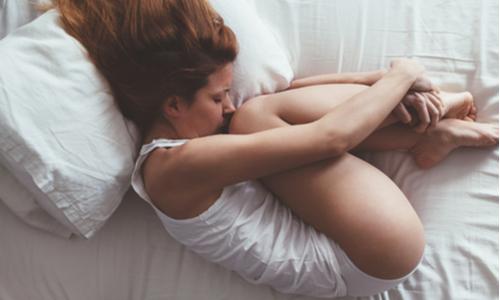
- Craving certain foods
- Tender, sore or swollen, breasts
- Feeling bloated
- Gaining a little weight
- Headaches, dizziness, nausea
- Swollen hands or feet
- Joint or muscle pains
- Skin problems, like acne or breakouts
- Upset stomach
- Cramps or pain in the lower abdomen or belly
Emotional symptoms of PMS include:

- Feeling low, depressed, upset, or anxious
- Mood swings or feeling cranky
- Feeling more angry, annoyed or irritable than normal
- Not wanting to be around people
- Low concentration
- Trouble sleeping
- Changes in the desire to have sex
Some females just experience some of these symptoms and not all, which is totally normal. PMS can be different for every female or period cycle.
Also Read: Why does period blood vary in color and what does it indicate?
How to Get Rid of Menstrual Cramps?
1. Use a heat patch

Using a heat patch or wrapping one on the abdomen can help relax the uterus muscles. It is the uterine muscles that cause menstrual cramps. Heat can boost the circulation in the abdomen and thus reduce pain.
Wearing a heat wrap for menstrual cramps is a very effective remedy to relieve menstrual cramps and discomforts, fatigue and mood swings.
2. Massaging the lower abdomen or tummy with essential oils
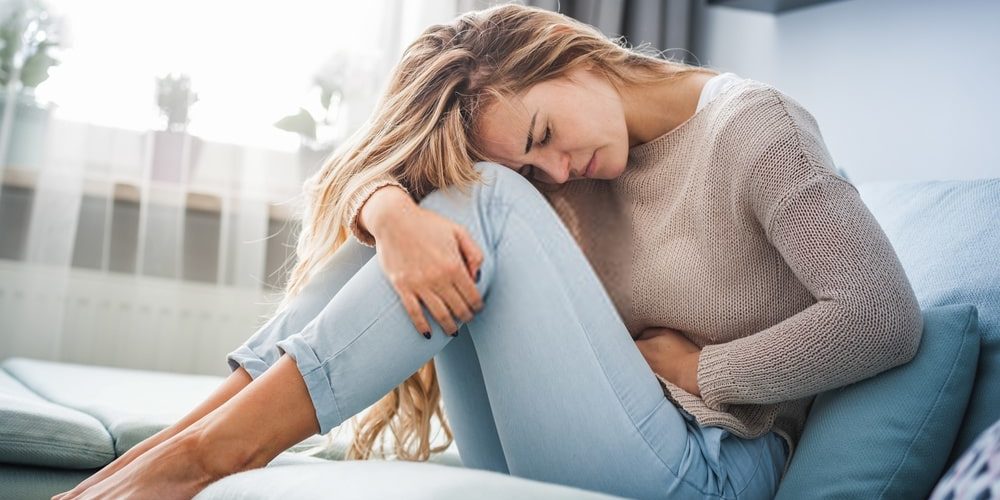
Some essential oils can help get rid of period cramps when massaged on the abdomen. A blend of essential oils can be most effective in treating lower abdomen pain or cramps.
You can use the following essential oils, single or a blend of some to get rid of menstrual cramps-
- Lavender
- Rose
- Marjoram
- Sage
- Cinnamon
- Clove
Before using essential oils, mix them with a carrier oil (coconut or jojoba oil), which can help to spread the oil smoothly over a large area and also helps in easy absorption of oils into the skin.
Massage the blend of oils in a circular motion on the lower abdomen for about 5 minutes a day before and during the period to help lessen the cramps or discomforts and boost circulation in the abdomen.
3. Take an over the counter pain reliever
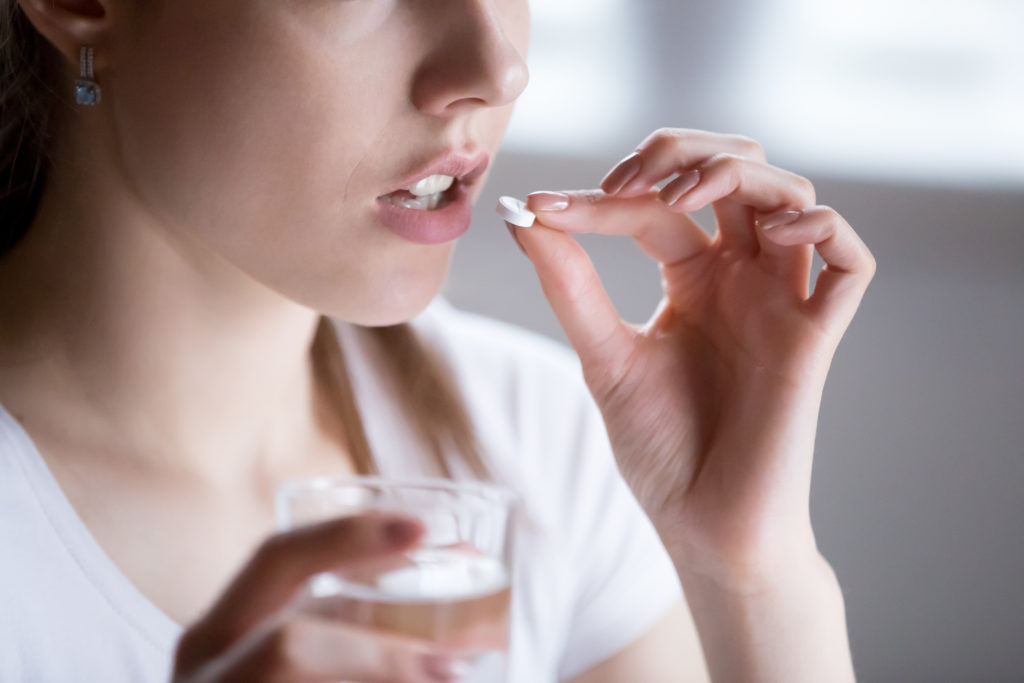
Over the counter pain, relievers such as ibuprofen, naproxen, or aspirin can be effective in treating the period cramps. Such medications work best if taken at the first sign of menstrual cramps before the cramps are severe. (Also Read: How Safe Are Pills To Delay Periods? )
4. Exercise

Low-to-medium intensity cardio or aerobic workout can help reduce the cramps and pain during periods.
Consider going for a brisk walk or playing your favorite sport as a mild physical activity. ( Also Read: How to stay active during different phases of Period Cycle? )
5. Soak in a tub

Soaking in warm water is another way to relieve period discomfort. This way, the abdomen area that surrounds the pelvic muscles get the warmth they need to relax, which reduces the pain and cramps.
You can also add a few drops of essential oils like lavender, sage, or rose to the warm bathwater for better results.
Try to soak in a warm bath for about 15 minutes to get the best benefits from it.
6. Do yoga
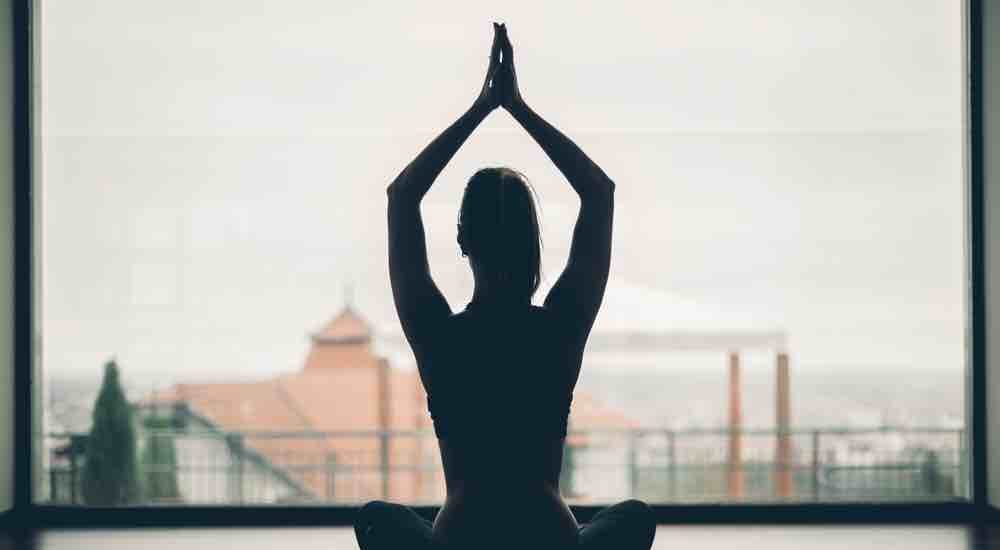
Just like aerobics or other mild exercises, yoga can also help you get rid of menstrual cramps. Try some relaxing yoga in the morning for 15- 30 minutes, before starting your day to relax the body and reduce period discomfort. Yoga can also help in reducing body or backache, which is also common during periods.
7. Take supplements
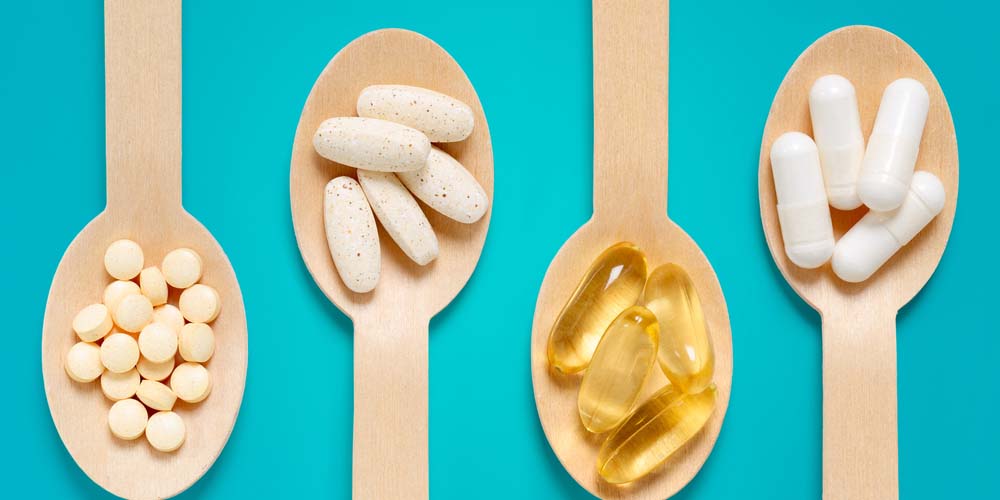
Some dietary supplements such as calcium, vitamins B-6, B-1, E, and D, magnesium, zinc, vitamin B-12, and fish oil can help reduce period cramps. But, it is suggested to consult your gynecologist before adding these during your periods.
8. Avoid caffeine, cold and salty foods

It is a good idea to avoid certain foods such as caffeine, cold foods and beverages, fatty foods, alcohol and salty foods that can cause water retention, bloating, and add up to the menstrual discomforts. A low-fat, light vegetarian diet can help reduce period cramps, pain and premenstrual syndrome symptoms. (Also Read: 11 Foods that can actually Delay your Periods Naturally !! )
9. Stay hydrated
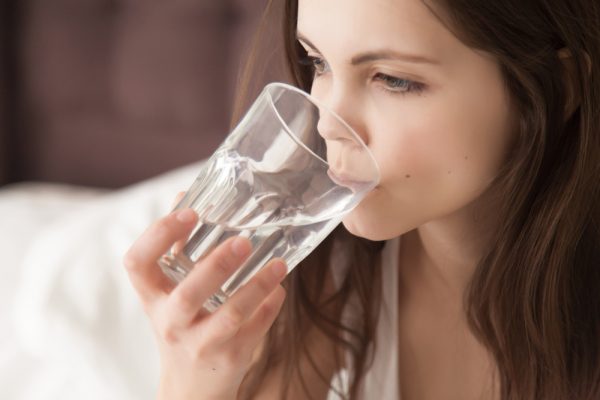
Dehydration can be a reason for period cramps. A hydrated female is less likely to have abdominal cramps during the period. Though, this is not the same for every female. To reduce the risks, drink 8 to 10 glasses of water a day.
10. Try acupressure
Acupressure is another home remedy to reduce and relieve period cramps. Acupressure is a non-invasive Chinese medical treatment that is used to treat various health issues. This treatment involves the use of fingers to apply firm pressure to target the body parts you want to treat. Acupressure can help ease various symptoms including period cramps and PMS symptoms.
The accurate way to do Acupressure:
- Measure 4 fingers up from the inner ankle bone.
- Firmly rub the area for a few minutes.
- Repeat the same daily or as needed, before or during the periods.
Overview
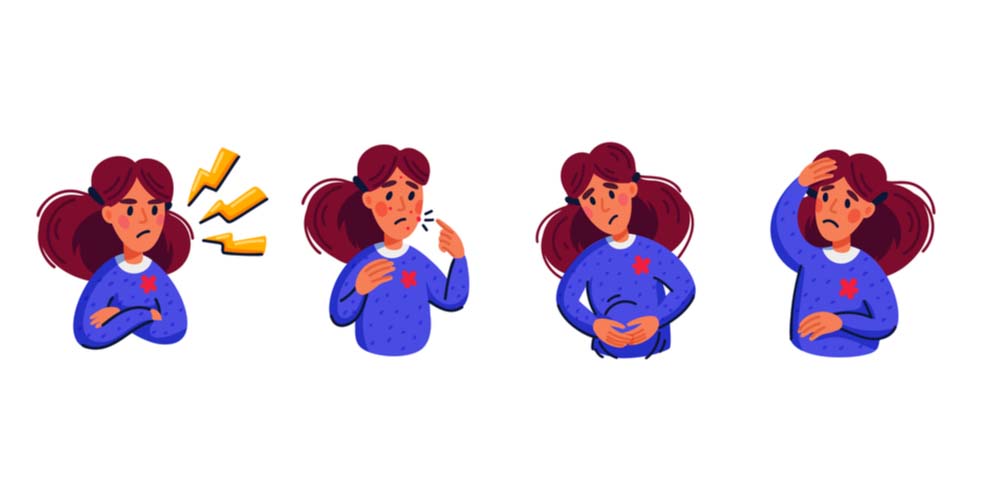
Just like the period cycle, PMS and other symptoms during the period vary in females. The best way to deal with them is to try home remedies or consult your doctor. In case the severity increases or the pain becomes unbearable, consult your gynecologist to check for any other health conditions that may be causing the discomfort.
Also Read:

